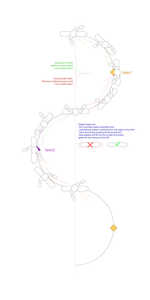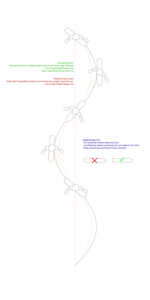Reflections on The Secrets of Snowboard Carving Part I
I'm just slaying...
I'd like to share some insights I've gained from observing numerous Japanese carvers on social media. However, I want to emphasize that I'm not an instructor, so my perspective might be flawed or misleading.
Nevertheless, I've been teaching a group of individuals at my local resort who are interested in carving, and these tips have proven effective in enhancing their technique and style.
One of the most significant aspects of carving is training your brain to adapt to new methods. As a snowboarder, I've noticed that many of us feel confident once we can navigate red and black runs without crashing, often without realizing that we're primarily turning by skidding with our back foot, resulting in inefficient edge usage and instability. When we decide to improve, our muscle memory is so entrenched in active board manipulation that carving seems daunting.
Having been through this process, my first tip for everyone is to SLOW DOWN and practice isolated turns at a leisurely pace. Initially, engaging the edge for carved turns may feel unstable, almost as if you're on the verge of falling. When I see my students experiencing this imbalance and falling, I encourage them to repeat the process until that feeling of unsteadiness transforms into a sense of control.
Another effective tip, closely related to patience, is learning to turn your board passively. This means allowing a brief moment for the board to respond and engage the turn, especially during larger arc turns, before applying torsional rotation and feeling a solid foundation beneath your feet.
Lastly, my most significant tip is to be conscious of your line of sight. I believe the head serves as the starting point for all upper body rotation, which ultimately affects the movement of the hips. Therefore, I find it much easier to engage the hips by aligning my sight rather than relying solely on mental cues, especially in the beginning stages.
I've also created a couple of sketches that I hope you find useful, along with two links to further illustrate these concepts.
Notice his line of sight always looking for the next apex, along with the counter rotated upper body at the begining of the turn.
Notice his silent upperbody and more fixed line of sight.
Hope it helps!
Cheers!
All good stuff. I’ll add that it’s great to take a step back… go back to a green run and carve it comfortably without speed checking, then step it up. This was easier to do on my Freecarver 6000 than a bigger carver. Focus on technique, then get more comfortable with speed. That was my approach at the start of this season (I got out of shape… again).
I’ve always done the look where you want to go, but I wasn’t opening my hips as well as I should. The hand to the knee is a great drill. Bringing my shoulder around helped more than turning my neck.
Big White, BC, Canada
Intentional practice on a Green (beginner/Easy) trail is essential because a carved turn produces minimal braking. The student rapidly builds speed until they learn how to tighten their turns. A Green slope allows technique practice for at least a few turns before the student develops terrifying speed and has to skid to slow down.
A key concept in carving, using a board or skis, is that you don't turn the board/ski, it turns you!
I know this is a ski carving instruction video but it has a great process for teaching how to carve.
Thanks @carverarcalis! Great stuff. Love the diagram.
I think there are some differences between the pencil line style and the Asian style carve, at least with respect to both rotation/counterrotation and the compression timing. I tried a run of Asian style turns for an upcoming video but it didn't quite work out... Harder than it looks!
I'm just slaying...
@riotsupercarver That’s a really great video. I wish all skiers would actually follow that logic. It’s so odd that when the skiers started teaching snowboarding they just abandoned all that and did something entirely different (at least that’s what CASI seemed to do).
I’ve had a few misconceptions of what is proper:
1) Until this year I’ve always tried to initiate a turn as a carve on edge. On the steeps that frequently resulted in a skid/speed-check at the end, before tucking the tail back in before the next turn. I’ve learned that drifting into the turn is actually very handy, getting the board going across the hill. It can be really smooth and fluid. This controlled skid/drift can be exhilarating, and it's a skill I’m still developing.
2) The counter rotation on toeside carves (keeping the hips open). Unless I’m laying out a long carve, this just feels more natural… but I’ve fought it because I thought it was wrong. Lars recently posted a great video about it, and I’ve noticed it’s more common with others as well.
Big White, BC, Canada
I completely agree that snowboard coaching has abandoned the "essentials" and swapped them for a freestyle-based approach.
Regarding your misconceptions:
-
Usually, when you experience chatter at the end of the turn, it's because the initiation wasn't proper, often due to a lack of body leaning. If you remain on top of the board rather than angling inside the turn, you build up too much speed in the first 90 degrees, making it almost impossible to carve through the 90-180 transition. Drifting at the beginning of the turn, in my opinion, is a great exercise, especially to carve on steep and narrow slopes or resetting your speed after a wrong turn. In snowboard slalom, it's the way to maintain speed and control. A French friend of mine, who is an amazing boarder, refers to it as "Derrape-Coupe."
-
I believe counter-rotating the body in the toes is the correct technique. However, for mid-level carvers like myself, slightly rotating the upper body after the apex of the turn builds confidence and allows for easier pumping out and transitioning. I think Lars and James developed this silent, counter-rotated upper body technique after mastering the technique to be more efficient and smooth throughout the turn. But I've noticed many beginner carvers over-rotate in an attempt to reach the snow, and they struggle at the transition point because they're too locked in.
Cheers!
It's true!
I've been practicing a lot these days to turn mainly with the obliques, and it feels like a completely different game, especially because of the early engagement of the edge onto the turn. I think the Asian carving style is easier on mellower/wider runs (unlike what you usually ride 🤣 ).
@carverarcalis My first point wasn’t really about chatter, but intentionally speed checking with each turn. I had always thought it was ‘proper’ to initiate a turn with strong edging, but that’s not always the best approach (steep terrain, poor conditions). Someone on the Alpine forum expressed it as ‘slarve or die’.
On #2, those diagrams are great. I’ve always tried to finish the toeside with hips open, but I’ve started playing with that sooner.
Big White, BC, Canada
@board-doctor
The Lars video you linked was judged to be really good analysis by some very experienced hardboot carvers on Alpinesnowboarder.com Forums whose opinions I respect. I don't even own a softboot setup so I'm not in any position to give a first hand opinion.
@board-doctor I feel you 😆 here in the pyrenees it get's really tricky, speedchecks and slarved turns are awesome resources to have.
thanks about the diagrams, as I said I'm not a professional and I'm sure I got a lot of things wrong. Just trying to give my POV if it's of any help.
Cheers!
Here's that video. I would call it a fail. I was trying to do some down unweighted carves for a new video showing some different types of carved turns. They felt like down unweighted but it's hard to see in the video. The bending doesn't look nearly as exaggerated as it felt.
I'm just slaying...
I could wrong, but I think Asian boards are a bit different... Not as wide (allowing easier foot steering and requiring less hip movement) and often tapered (releasing the turn more down the fall line). They're not Revelstoke steeps either, so they're not trying to scrub speed. These are probably huge generalizations, and there are certainly exceptions, but I think it influences their style.
Big White, BC, Canada
- 21 Forums
- 227 Topics
- 2,206 Posts
- 1 Online
- 511 Members



